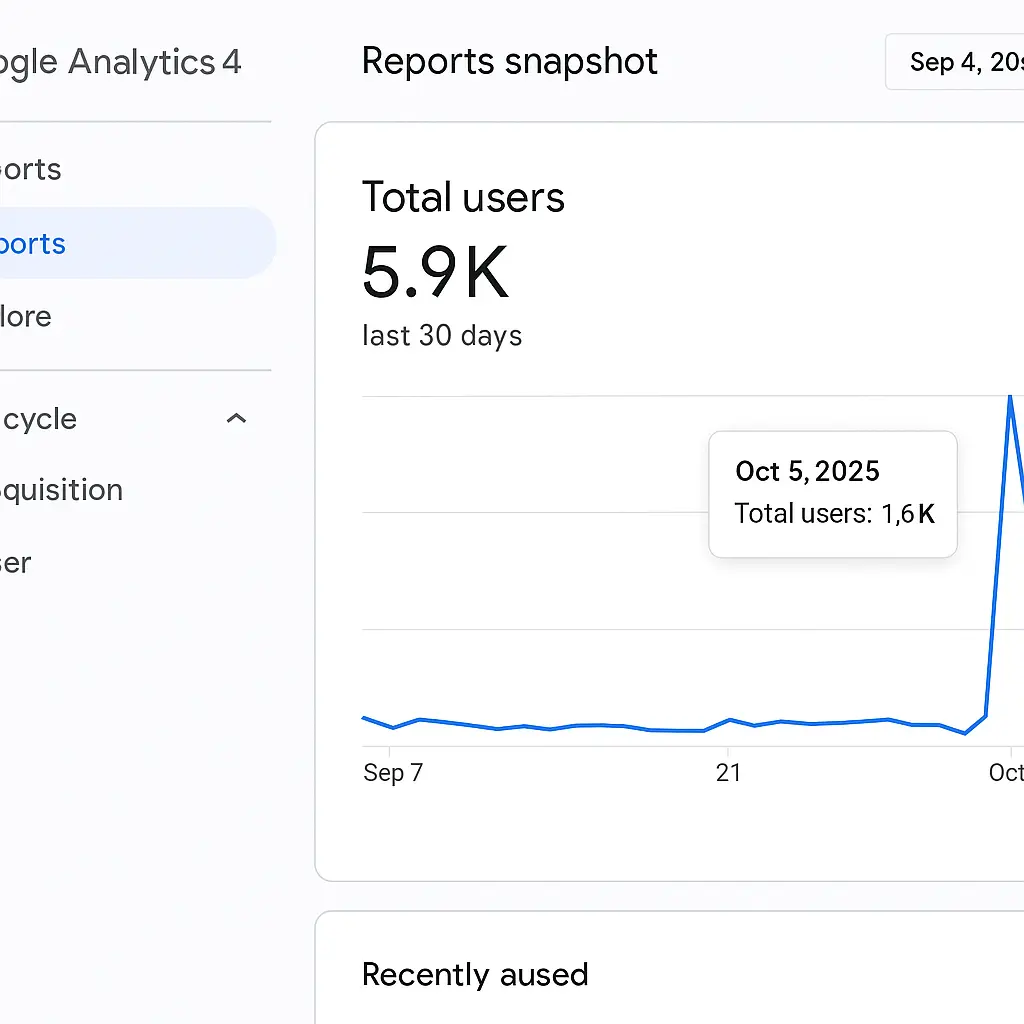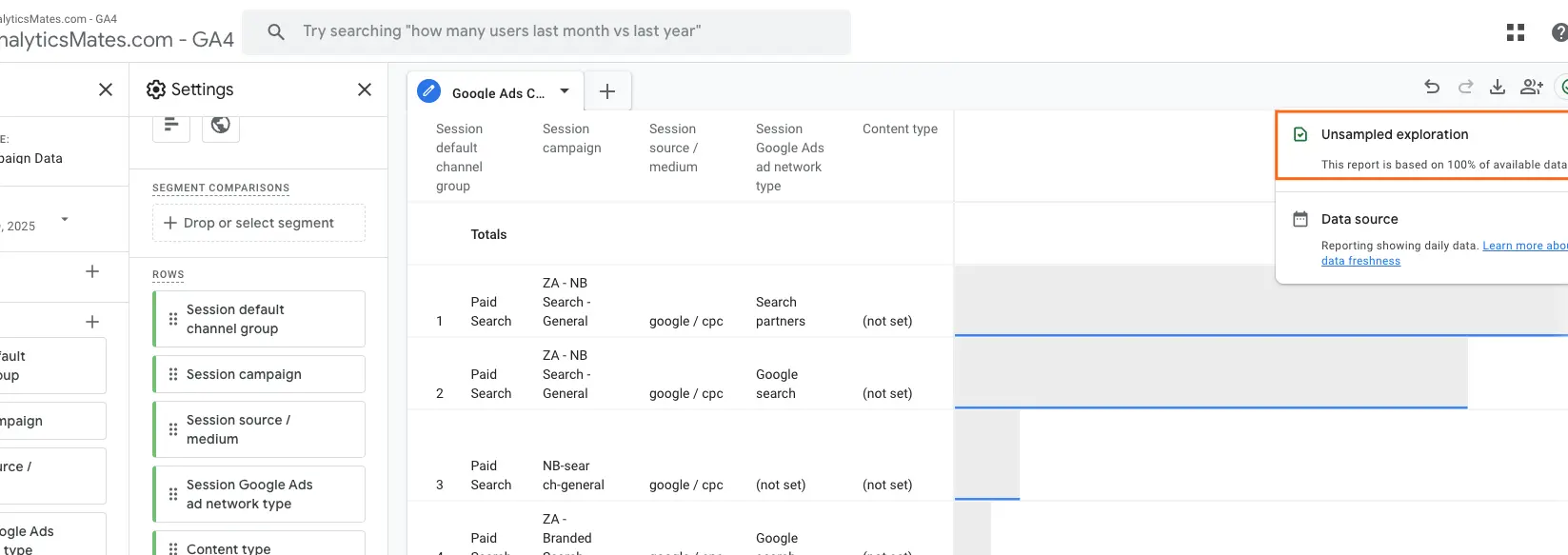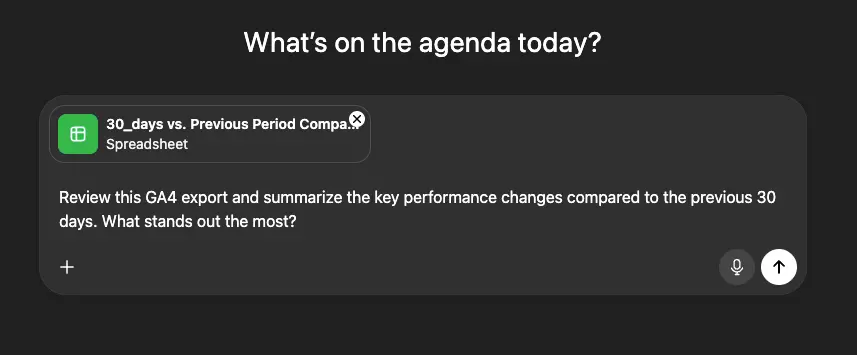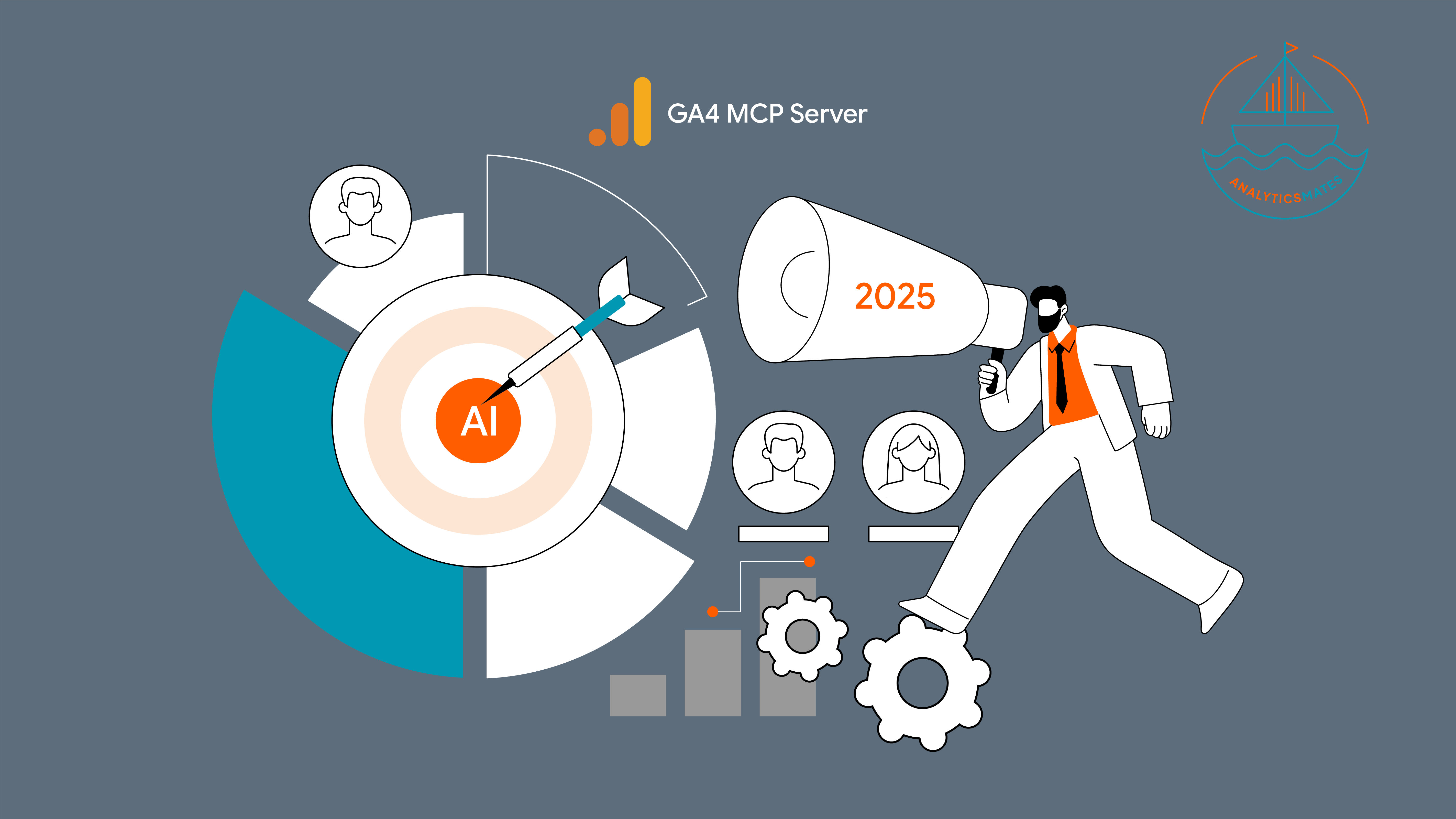If you already have GA4 running, you’ve probably felt two things at once: there’s plenty of data, and yet some answers still feel out of reach. That’s normal. In 2025, the best GA4 audits don’t start with fancy dashboards, they start with clean inputs, sensible settings, and a plan to let AI speed up the analysis you were going to do anyway.
That’s what we’re going to discuss here - we’ll walk through a simple flow of data cleanup → default GA4 settings → AI-assisted analysis. So, let’s get into it.
Get to Know Your Business Before the GA4 Audit
Before auditing the data and jumping into the numbers, it’s important to start with context. This is because isn’t just about fixing tags or tracking, it's about making sure your setup supports your actual goals.
Understand Your Business Model
Is your website for lead generation or e-commerce?
- For lead-gen, we focus on form fills, consultations, and calls.
- For e-commerce, we look at purchases, cart activity, and product views.
Knowing your main conversions helps us align tracking with what really drives growth.
Identify Regions and Consent Rules
Where do your users come from? If you serve regions under GDPR or similar laws, we’ll check that your tracking and consent settings follow the right privacy standards. We’re not going into details about this, but you can check out our previous post on this here.
Review Your Current Setup
Next, we take inventory of your tools:
- GTM/Tags/Pixels to see what’s firing and what’s missing
- CRM (offline data), ad connectors like Google Ads or ActiveCampaign and would be also important to understand what’s the website's technical foundation - are you using Content Management Systems such as WordPress, Webflow, etc.
This gives us a clear picture of your current stack before making improvements.
Define What Success Means
Finally, we set clear goals.
Ask:
- Which channels bring the best leads?
- Where are people dropping off during checkout?
- Is our tracking focused on the right metrics?
These answers guide the rest of the audit.
Clean Up Your Data Before You Trust It
Before diving into the analysis part, you first need to trust your inputs. Ensure that your data has been cleaned up, here things you need to check:
Check for Bots and Spam Traffic
Start by verifying that your data comes from valid hostnames. Filter out test environments, internal company traffic, and anything from known data centers or crawlers. These unwanted hits can distort your metrics, making your reports look stronger (or weaker) than they actually are. Although Google Analytics 4 promised to filter spams and bots, still attackers would really find a way to slip into your account. If you find very unusual patterns or spikes in your data, investigate and filter them out manually in your account. You can find samples of the spiders and bots list here.

Review Channel Groupings
Next, look at your default channel groupings. Most of the time paid social traffic to show up as a referral or for UTM parameters to be missing. Attending this ensures that traffic is attributed correctly, giving you a clear view of what’s really working in your campaigns. You can check out our previous blog post to learn more about UTM parameters.
Investigate Query Parameters and Your Referral Exclusion Settings
If spikes suddenly appear in your report to a single landing page, investigate. You need to be aware that search or query parameters or missing referral exclusions can inflate your session counts and make it harder to identify true acquisition sources.

Audit Event Hygiene
Good event hygiene is key. Check for naming collisions, double fires, and duplicates such as page_view and view_item triggering at the same time. Cleaning up your event structure helps maintain consistency and prevents inflated event counts. This is part of the previous post we’ve shared on running GTM audits.

Be Aware of Sampling and Thresholding
Google Analytics is now better in handling sampling and thresholding, but if you ever find it’s happening, just make sure to follow some guides on how to decrease the likelihood that this will occur here (data thresholding) and for data sampling here. These limits can affect how much data you see in GA4 reports.

Apart from this, we’ve also written a comprehensive guide titled How to Audit Your Google Analytics 4 Setup to help you evaluate your current GA4 configuration, identify tracking gaps, and ensure your data collection is accurate and reliable.
Let AI Do the Heavy Lifting in Your Analysis
In this section, we assume that you’ve already made sure your current source of data is clean. Now, it’s time to further check it using AI. Remember that when it is used properly, AI can help you check trends, identify issues, and even generate new test ideas grounded in real data.
Export Your Data for Context
Start by exporting your data, for example using the date range of the last 30 days of data, along with the previous 30 days for comparison. Include key datasets like:
- Acquisition data
- Pages and screens
- Events and conversions
- E-commerce performance (if applicable)
Having this side-by-side view helps AI detect patterns and changes over time, not just surface-level stats.
Feed the Data to an AI Model
Once you have the CSV exported, feed them into your choice of LLM - such as ChatGPT or Gemini. Give it clear instructions on what to look for, like:
- Anomalies and leakages across user paths, devices, locations, or channels.
- Missing or duplicate events, or parameters that don’t match your tracking plan.
- Low-quality traffic or campaigns that spend heavily but show poor engagement or progression.

You can download our free guide: Top 25 AI Prompts for GA4 Data Audits to help you uncover insights, detect tracking gaps, and identify wasted spend in just minutes. These ready-to-use prompts are designed for tools like ChatGPT or Gemini, making it easy to analyze your exported GA4 data with the power of AI.
Know the AI Limits
We know for a fact that AI is a powerful and useful tool, but it doesn’t mean it does all things when it comes to your data, remember that it isn’t a replacement for human oversight. It can’t change admin settings, verify tag loading, or fix consent configurations. Aside from this, here are things that AI can and can’t do.
- AI can speed anomaly detection, find gaps vs. your canonical map, synthesize insights, suggest tests, summarize multi-source exports.
- AI can’t set retention to 16 months, wire cross-domain, ensure tag loads on every page, resolve consent/PII issues, or replace QA.
FAQs
Do I need BigQuery to get value from an AI-assisted audit?
A: No. CSV exports from GA4 can work. BigQuery just makes larger or recurring analyses faster.
How often should I run a GA4 audit?
A: Do a light monthly check, a quarterly deep dive, and a full audit after major site changes or platform migrations.
What if our consent banner blocks key events?
A: Document the consent logic, test with and without consent, and ensure your measurement plan respects regional rules. Don’t “work around” consent - fix it.
We see spikes from weird cities and data centers. What now?
A: Tighten hostname filters, exclude internal/dev traffic, and review known data-center patterns. Rebuild channel groupings if spam polluted them.
Is Enhanced Measurement worth keeping on?
A: Yes, but tune it. If you already track scrolls or video plays via GTM, turn off the duplicate EM events.
What’s the fastest way to spot wasted spend?
A: Export acquisition + conversions, slice by channel/campaign, and use the “Channel waste” prompt. Look for high volume with low qualified conversions.
How do I prove the audit worked?
A: Before/after tiles: invalid traffic share, % events with required params, qualified CVR, step-through or form completion rate, and cost per qualified lead.
We’re lead gen, not e-commerce. Does this still apply?
A: Yes. Replace checkout steps with your key actions (form submit, call click, file download) and enrich leads with UTMs and source details.
Can AI fix our broken GA4 property?
A: No. It can highlight issues faster, but humans must change admin settings, tags, and consent wiring.
What if we’re missing historical data?
A: Start with cleanup and settings now. Document the gap. Use the audit to ensure the next 30 days are clean and measurable.
Conclusion
A good GA4 audit doesn’t try to do everything at once. It starts with clean inputs, locks in the right settings, and then uses AI to move faster from “what happened” to “what we’ll do next.” Follow the flow, run the prompts, and give yourself 30 days to show a lift in quality metrics and conversion signals. When your numbers are trustworthy, decisions get easier and results tend to follow.
If you’d like, I can turn this into a publish-ready draft with hero copy, the checklist PDF, and the prompt pack formatted for download.
Thank you for reading!
We're always looking for ways to improve our Google Analytics 4 blog content. Please share your feedback so we can make it even better.
See Article Images















